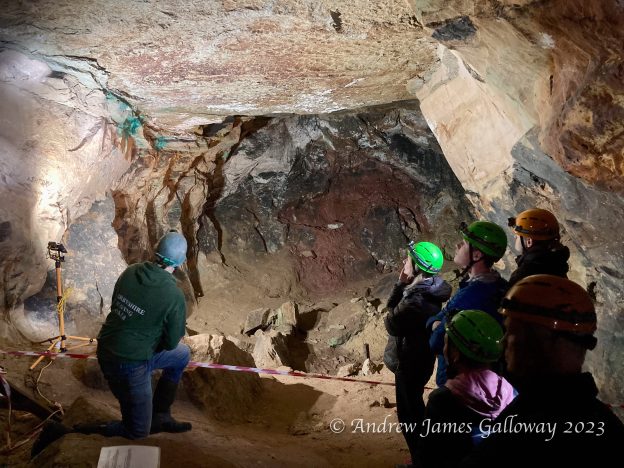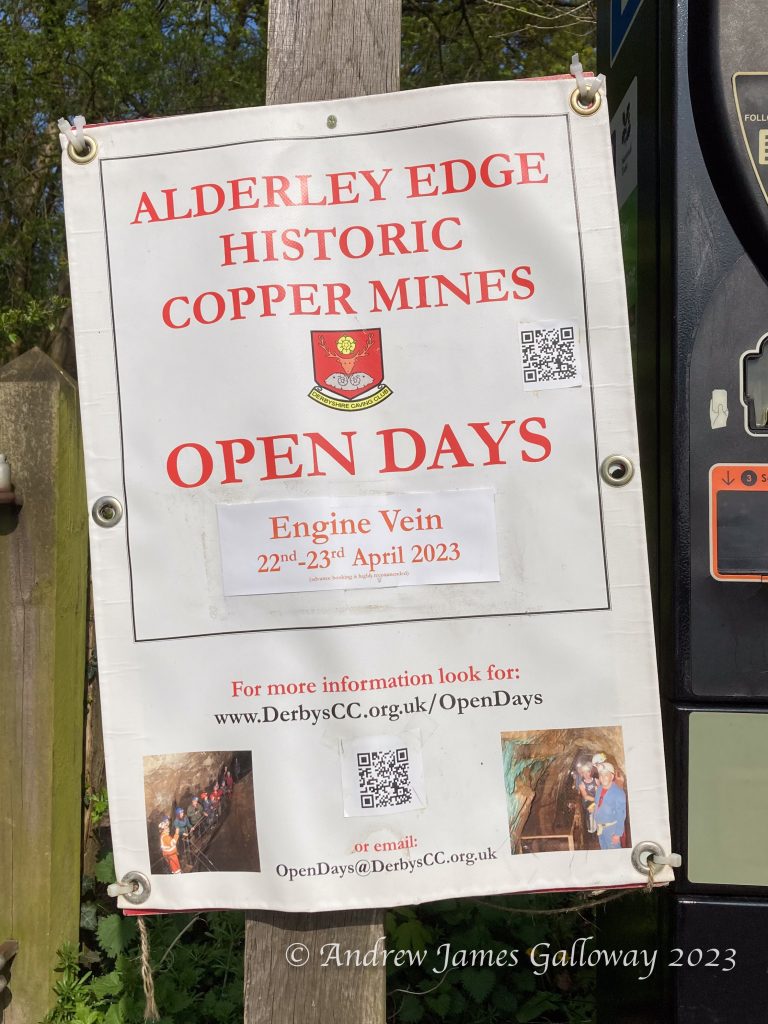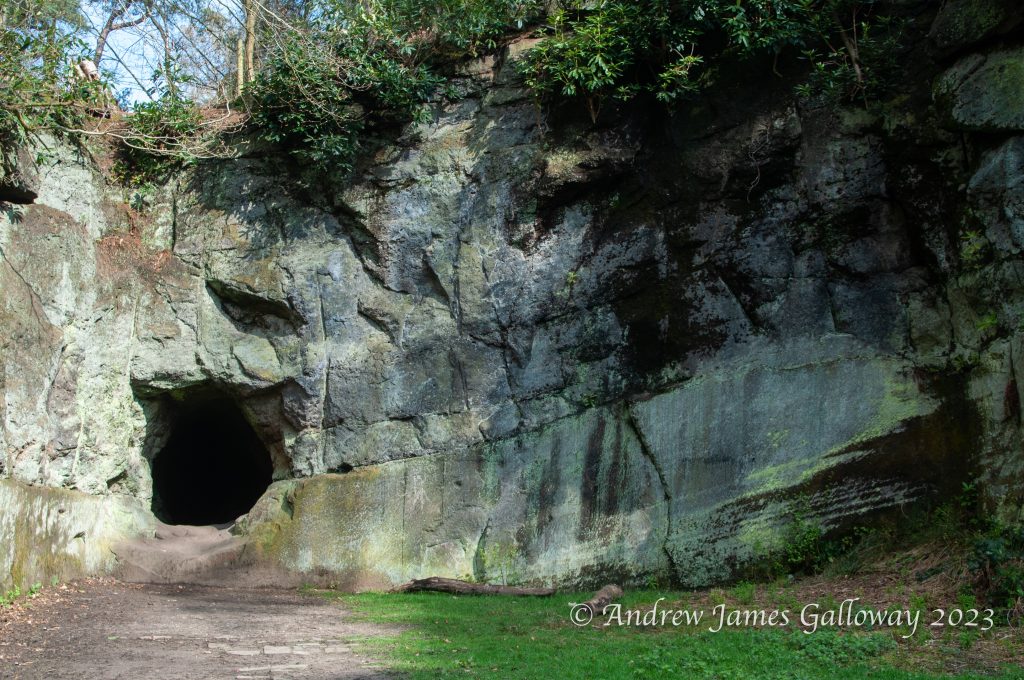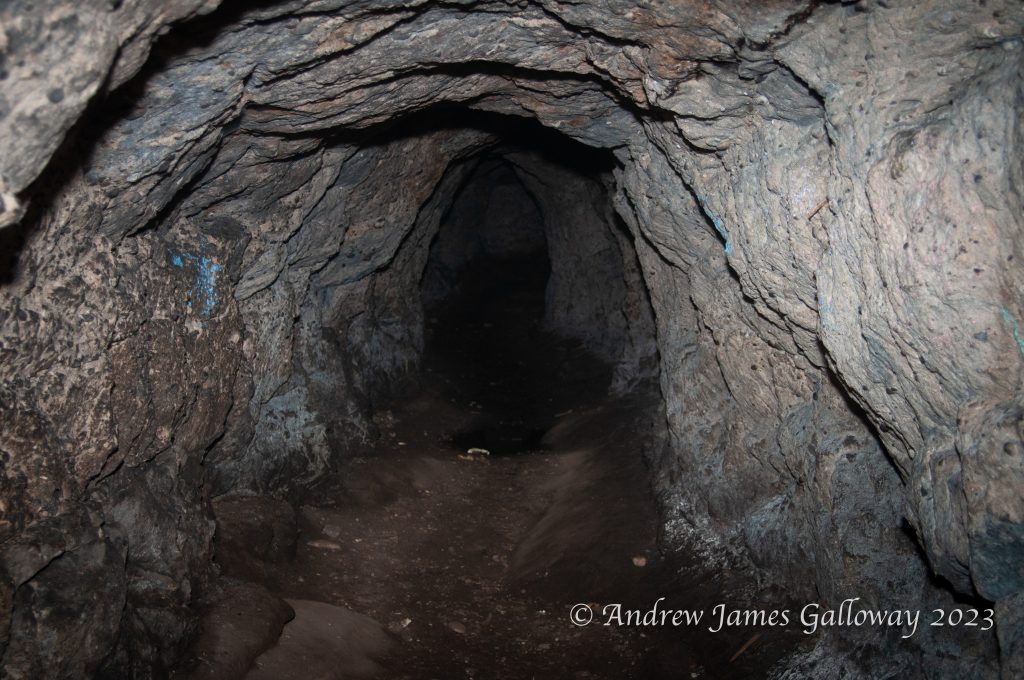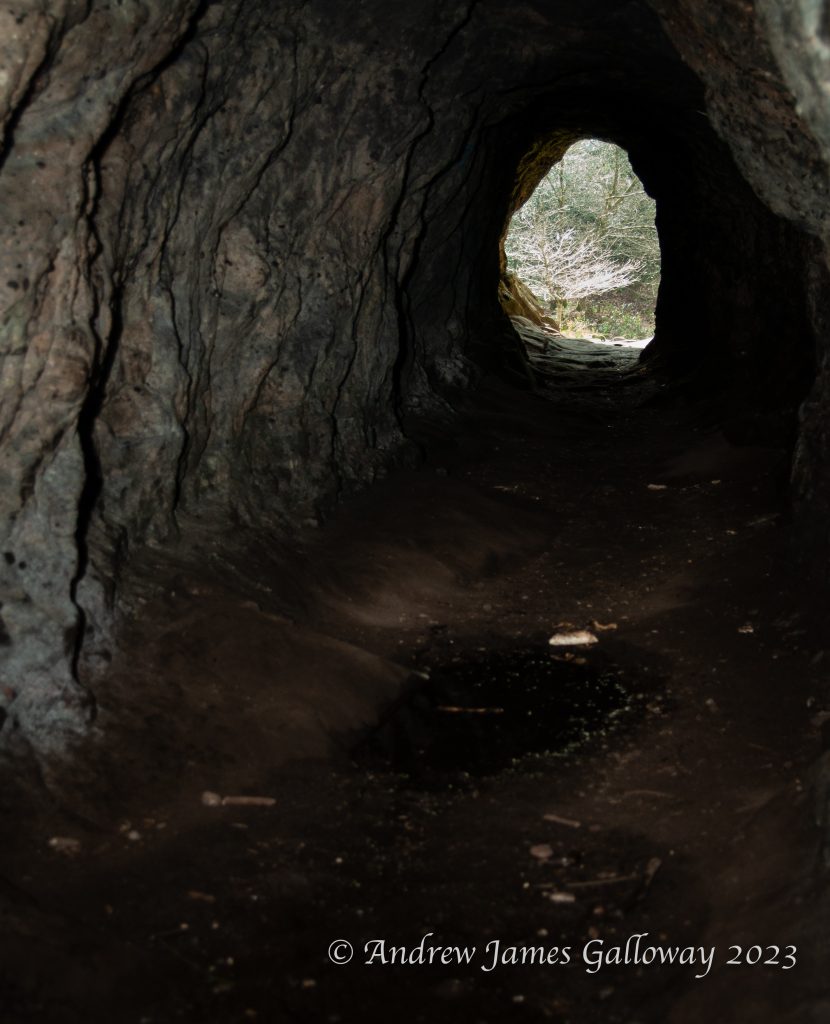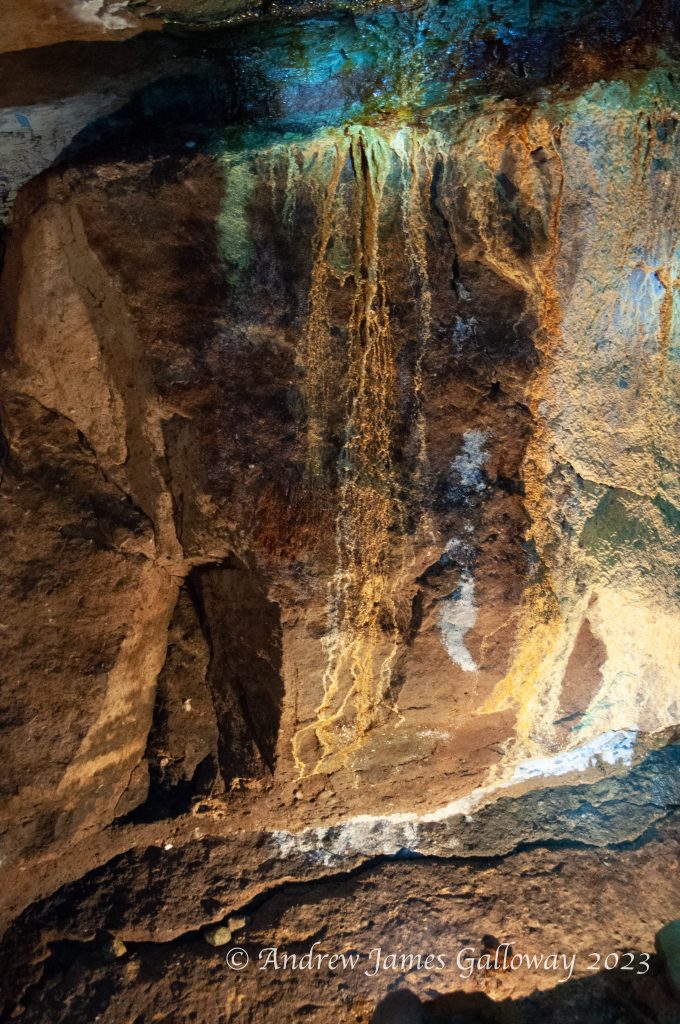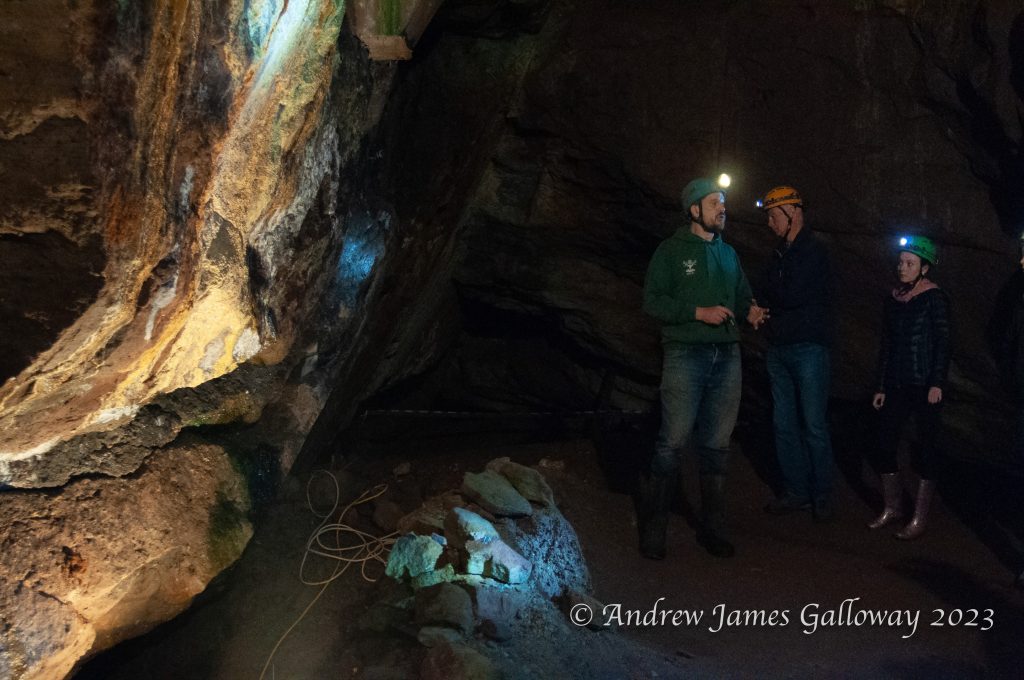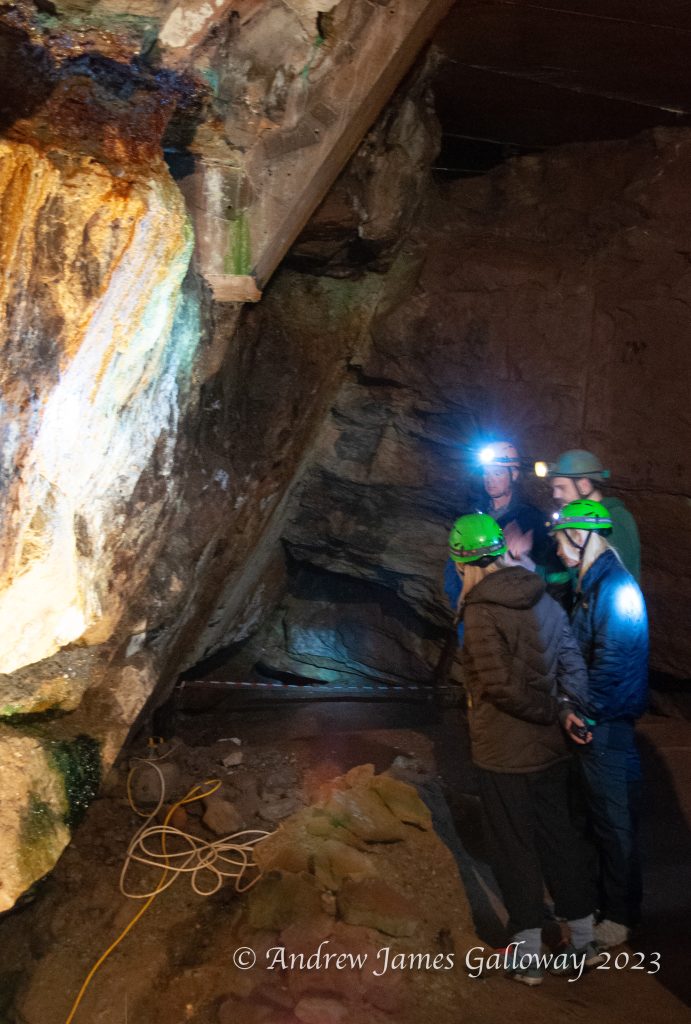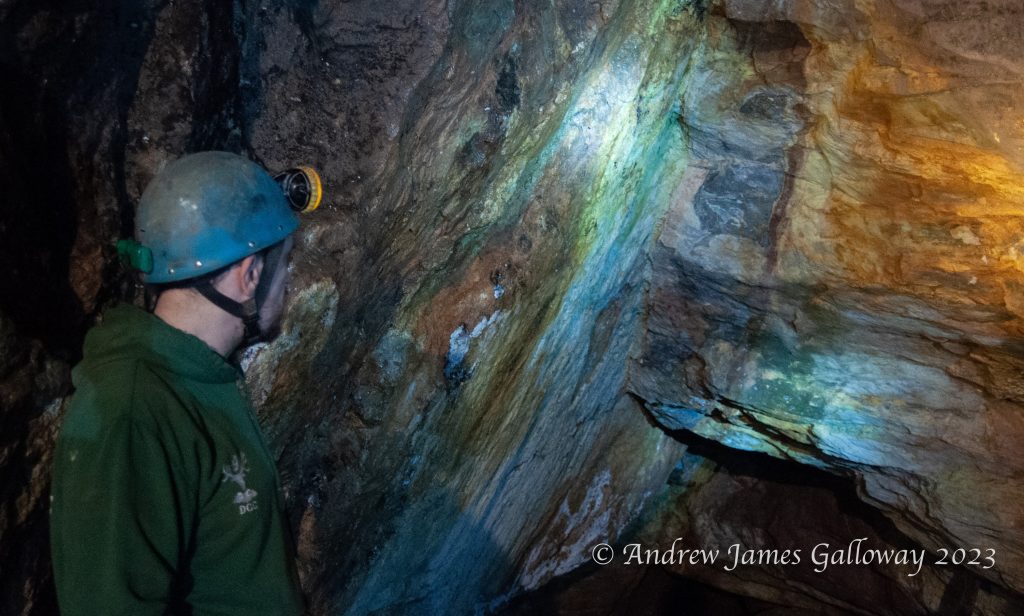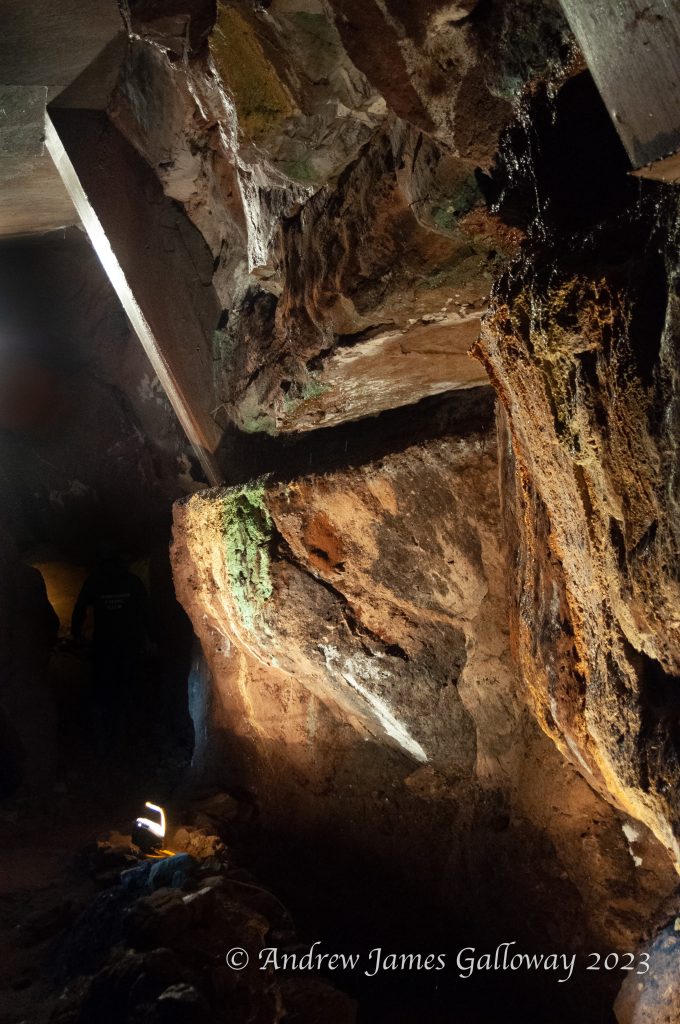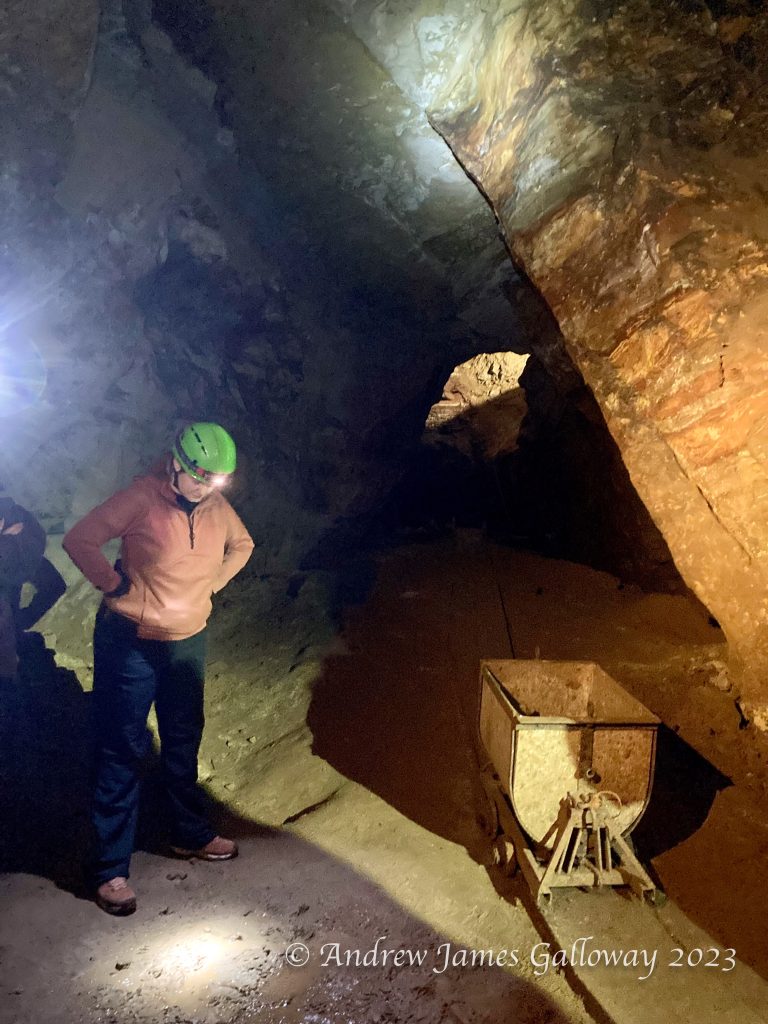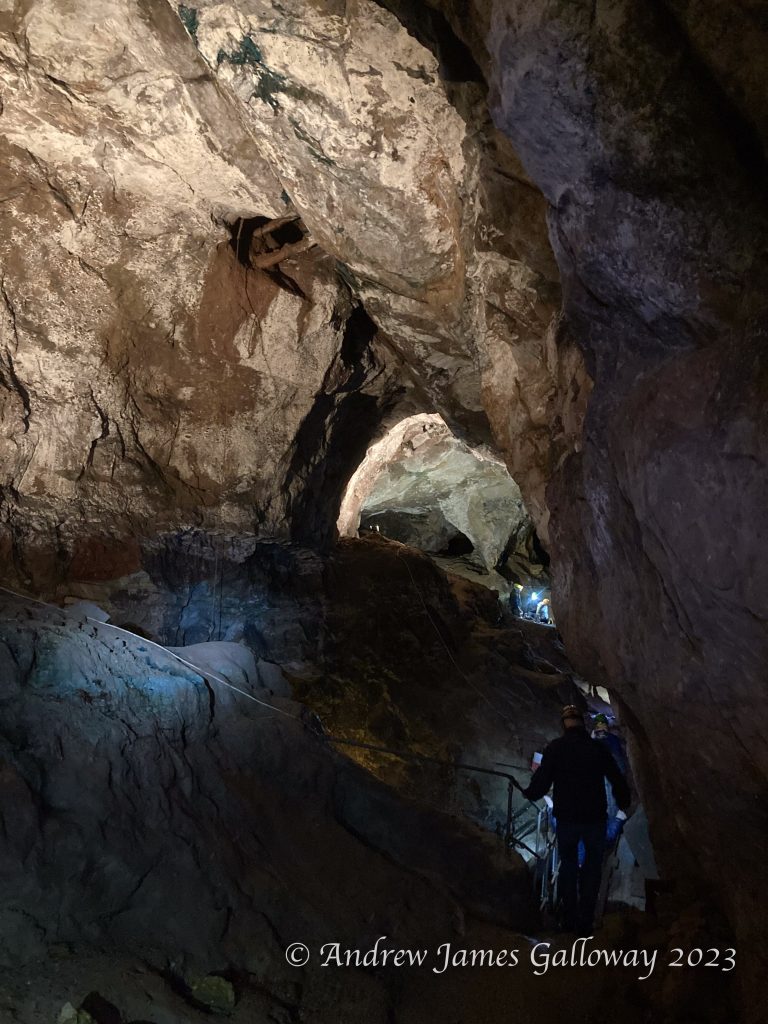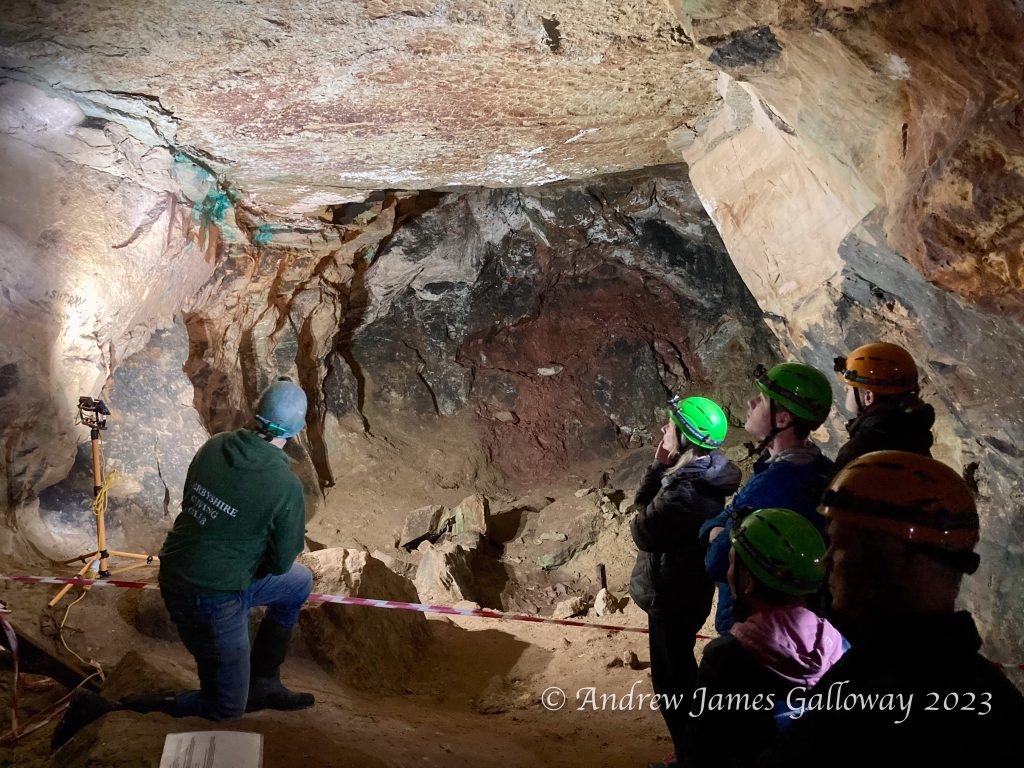Twice a year the Derbyshire Caving Club (DCC) open up one of the old mines at Alderley to visitors. It’s a great opportunity to experience some of the history of mining at Alderley and to get a glimpse of the extent of historic excavations. I went along to reacquaint myself with subterranean Alderley and to take some photographs.
The sandstone escarpments of Alderley Edge, as distinct from the residential town, have been described by the relatively recent Alderley Edge Landscape Project (AELP) as “an anthropogenic landscape, of remarkable richness, rarity and antiquity”. The AELP was a co-operative undertaking of The National Trust and The Manchester Museum at the University of Manchester, conceived in 1995 and formally wound up on 2005. Further information about the project can be found on the DCC website at https://www.derbyscc.org.uk/alderley/current_aelp.php
Geologically, the Alderley escarpment is composed of Triassic conglomerate sandstones some 240 million years old that were laid down in an arid environment prone to flash floods, which brought down debris from the surrounding mountainous areas, rich in mineral deposits. The earliest evidence of mining at Alderley dates to the Bronze Age. The main ore extracted was copper, but cobalt, iron, lead, silver and even gold were also found. In their book Prehistoric Cheshire, Victoria and Paul Morgan recount how an oak shovel found by 19th Century miners in a section of mine at Brynlow to the south west of Engine Vein, has been radiocarbon dated to approximately 3,700 years old. A large number of stone hammer heads and similar tools were also discovered in material that had been used to backfill the open cast mine.

